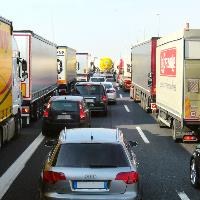(BRUSSELS) – The EU is set to reduce CO2 emissions of lorries, following a provisional deal between MEPs and the EU Council on new rules which set binding CO2 emission reduction targets for heavy-duty vehicles.
CO2 emissions from heavy-duty vehicles including lorries, buses and coaches, represent around 6% of total CO2 emissions in the EU and 27% of total road transport CO2 emissions.
The provisional agreement, which requires endorsement by the EU Member States, will ensure that between 2025 and 2029, new trucks will emit on average 15% less CO2 compared to 2019 emission levels.
From 2030 onwards, they will be required to emit on average 30% less CO2. Those targets are binding, and truck manufacturers which do not comply will have to pay a financial penalty in the form of an excess emissions premium.
This is the first time the EU is putting in place CO2 emission reduction targets for heavy-duty vehicles.
“Today’s agreement closes a gap in European environmental legislation,” said Romania’s Deputy Prime Minister and Environment Minister Gratiela Leocadia Gavrilescu, for the EU presidency: “It ensures that the heavy-duty vehicle sector starts contributing its share to our climate goals.” She added that the EU remains determined to deliver on the promises it made under the Paris Agreement.
In addition to setting binding targets, the co-legislators agreed to strengthen the incentive system for zero- and low-emission vehicles (ZLEVs) in the heavy-duty sector compared to what was proposed by the European Commission. Buses and coaches were excluded from the ZLEV system because these vehicle types are already incentivised through other measures.
The co-legislators also agreed specific measures which will ensure the availability of robust and reliable data. Data will be obtained through on-board devices which monitor the actual fuel and energy consumption of heavy-duty vehicles.
The agreement now needs first to be formally approved by the Parliament’s Environment Committee and then by Parliament and Council.


